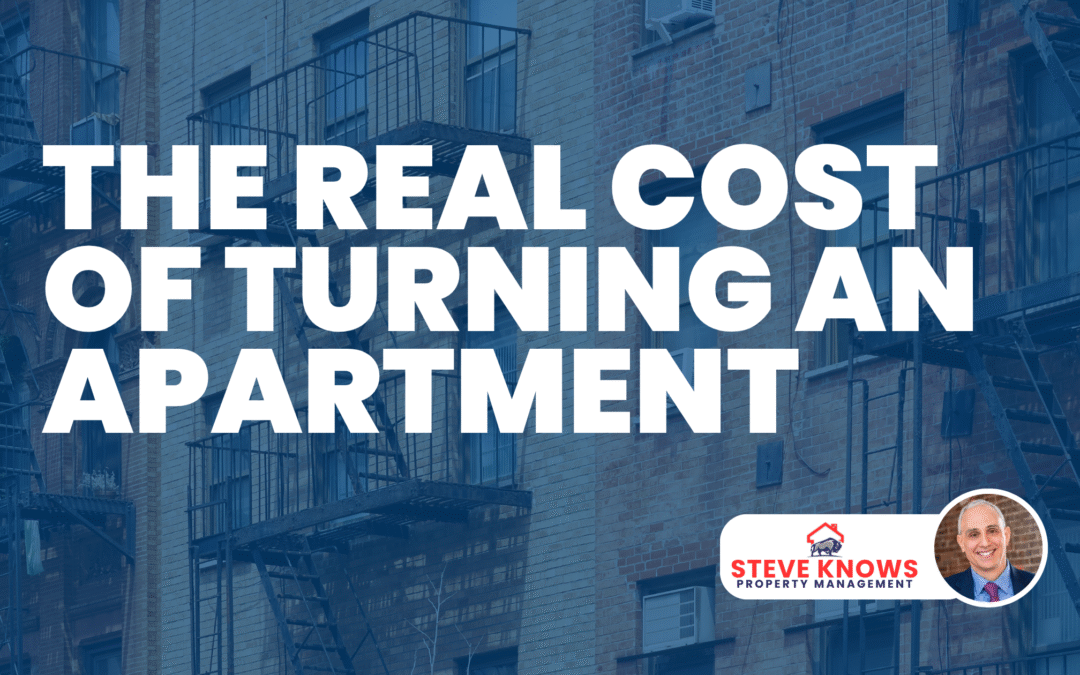Have you ever looked at a post-move-out invoice and thought, “Why is it so expensive? Aren’t I just paying for cleaning, paint, and a few fixes?”
You’re not alone. The average cost of turning over a rental unit can range from $1,000-5,000, with one 2023 report finding an average cost of nearly $4,000. In this post, we unpack where the dollars go, why today’s prices are higher than those some owners have come to expect, and how owners can minimize cost without cutting corners.
The Budget Breakdown
Move-out cleaning: This service costs $360 on average, though prices can vary depending on the unit’s size and condition.
Paint: Professionals charge between $2-6 per square foot of wall area, or about $400–$1,600 per room once you include trim, ceilings, and prep. (At Nickel City Property Management, we stick to full repaints, which cost more up-front but produce long-term returns. Read more about that here.)
Minor repairs: In New York, hiring a handyman commonly costs between mid-$20’s to low-$30’s in hourly wages. That bill gets higher once you account for payroll, insurance, and other overhead.
Common add-ons: Rekeying can cost between $50-100, and replacing smoke or carbon monoxide detectors can cost between $70-150 per new detector installed.
Materials: Building-material price indices rose sharply during the pandemic. While the market has stabilized since then, prices have not yet returned to pre-pandemic levels.
Compliance: Depending on the region you’re in, other costs may surface during turnover: For example, New York’s lead safety requirements are changing, starting in fall 2025 in Erie County. That’ll mean more work during turnovers to comply with proactive rental inspections.
Vacancy: This is the lion’s share of the cost of a turnover. In Buffalo, the average asking rent is about $1,300-1,400. Let’s say your unit is vacant for just one week: Already, you’ve racked up about $300 in lost income, even before any painting or repairing is done. (If you recall from a previous blog post, the average amount of time on market is over a month!)
Drumroll, Please!
Let’s do the math for a typical two-bedroom in decent condition: $360 for cleaning, $1,200-2,000 to repaint two rooms and a hallway, $300-750 for light carpentry/repair, $80-200 for rekeying and two new keys, $115-300 for detector replacements, $100-250 for trash dump runs and miscellaneous materials. If the unit was vacant for one week (an optimistic estimate), that’s another $300.
What’s the grand total? Between $2,466 and $4,160 — and that’s not including additional paint, extra repairs, new compliance items to address, carpet shampooing … you get the point.
If it feels like “more than it used to be,” that’s because it is. Increases in material prices, minimum wages, and safety requirements means getting a unit ready for market costs more. Plus, with higher rents, that vacancy time is more costly, too.
How We Cut Costs (Without Cutting Corners)
We can’t change the price of building materials or the wage standards. Minimizing vacancy time is the best way to cut turnover costs down. At Nickel City Property Management, we achieve that by:
- Offering self-showings: We’ve offered this for the last five years. By offering convenience and flexibility for renters, self-showings mean that you’re likely to fill the unit faster. (Read more about self-showings here.)
- Working with a network of trusted contractors: A high-quality and trustworthy contractor — like those in our network — responds quickly, keeps jobs on schedule, and does the work right the first time.
Want to hear more about the ways we can help you minimize vacancy — and, by extension, cut costs on that eye-popping turnover bill? Contact me at steve@nickelcity-pm.com.


